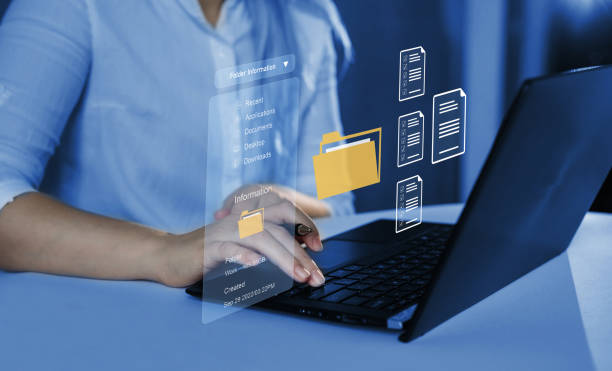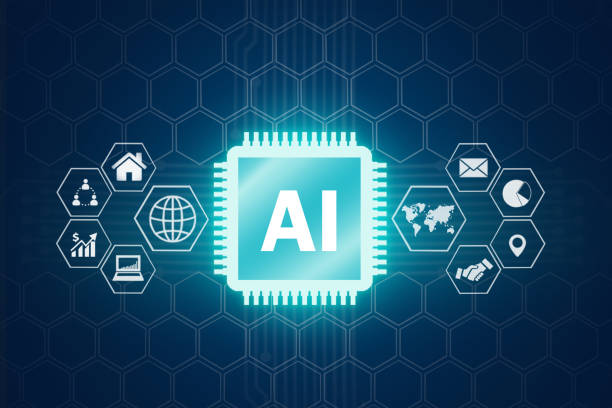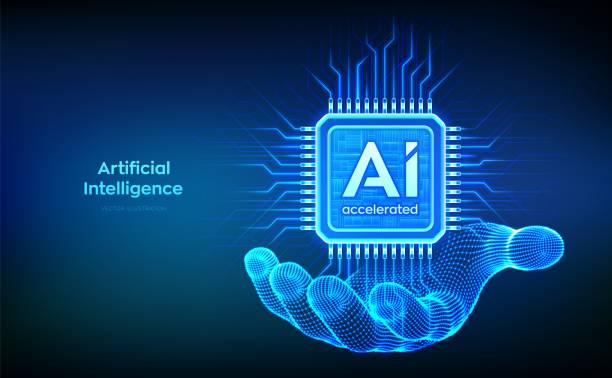What is On-Page SEO and why is it vital for your website?
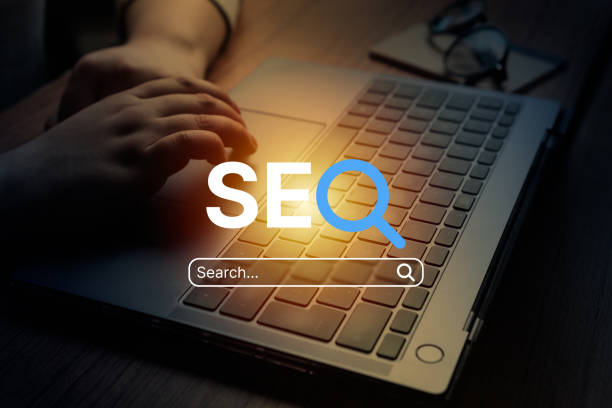
On-Page SEO refers to a set of actions you perform within your website to improve its ranking in search engine results and attract more organic traffic.
This includes optimizing content, structure, and HTML codes of your web pages.
Unlike off-page SEO which deals with activities outside the site (like backlink building), #on-page_seo is entirely within your control.
The vital importance of on-page SEO cannot be overlooked, as these actions help search engines like Google fully understand the main topic and value of your pages.
Without strong on-page SEO, even the best content may never be seen.
Correct optimization of on-page elements ensures your site is relevant for target keywords and has a higher chance of appearing on the first page of search results.
This approach not only helps with ranking, but also enables #search_engines to provide a better user experience to audiences and correctly deliver your content to users.
Ultimately, focusing on #ranking and quality #content is the foundation of long-term success in the online space, and on-page SEO plays a central role in achieving this goal.
How much does losing business leads due to an unprofessional website cost you? Solve this problem forever with professional corporate website design by Rasaweb!
✅ Increase credibility and trust of potential customers
✅ Easier attraction of new business leads
⚡ Get free consultation now!
The Role of Keyword Research in On-Page SEO Success

Keyword research is a fundamental and very important step in the process of successful on-page SEO.
Before any content or page structure optimization, you need to know what phrases and words your target audience uses to search for your content in search engines.
Identifying appropriate keywords helps you create content that exactly matches user needs and questions.
This stage includes finding primary keywords (head keywords), long-tail keywords, and related phrases that have both reasonable search volume and logical competition.
Using keyword research tools like Google Keyword Planner, Ahrefs or Semrush can provide valuable insights in this area.
By identifying the correct keywords, you can optimize your title, meta description, headings, and body content so that search engines easily understand the connection between your content and user searches.
This is a vital element for on-page SEO, as it not only helps with higher ranking, but also ensures that the traffic attracted to your site is genuinely interested in your products or services.
Ignoring this step can lead to creating content that no one searches for, or competing for keywords where you have little chance of success.
Key Elements of On-Page Optimization for On-Page SEO
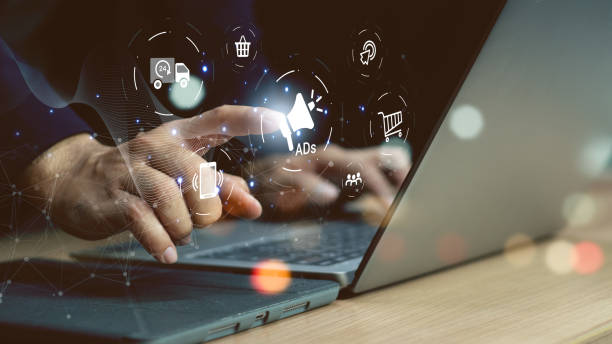
On-page optimization encompasses a wide range of techniques, each playing a role in strengthening your site’s on-page SEO.
One of the most important elements is the Title Tag.
The title tag should include the page’s main keyword and briefly and appealingly describe the page’s content, as it is the first thing users see in search results.
Meta Description also, although not directly affecting ranking, increases the click-through rate (CTR) by providing a compelling summary of the content.
Correct use of Headings (H1, H2, H3, …) is crucial for structuring content and improving readability for users and search engine crawlers.
H1 should contain the main keyword and other headings should be used to organize subtopics.
Image optimization with descriptive file names and appropriate Alt Text not only helps SEO but also improves site accessibility.
Short, readable, and keyword-inclusive URLs also help search engines better understand the page’s topic.
Considering all these elements is essential for a strong and comprehensive on-page SEO.
These actions not only improve user experience but also send clear signals to search engines that lead to better understanding and consequently higher rankings.
| On-Page SEO Element | Description | Importance for Ranking |
|---|---|---|
| Title Tag | First thing seen in search results; summary of content. | Very High |
| Meta Description | Short text describing page content. | Medium (impact on CTR) |
| Heading Tags (H1-H6) | Structuring content and expressing information hierarchy. | High |
| Image Alt Text | Description of image for search engines and visually impaired users. | Medium |
| URL Address | Unique address of each page on the web. | Medium |
| Keyword Density | Ratio of keyword repetition to total words in the text. | Low (emphasis on avoiding spam) |
Quality Content Production: The Cornerstone of Strong On-Page SEO
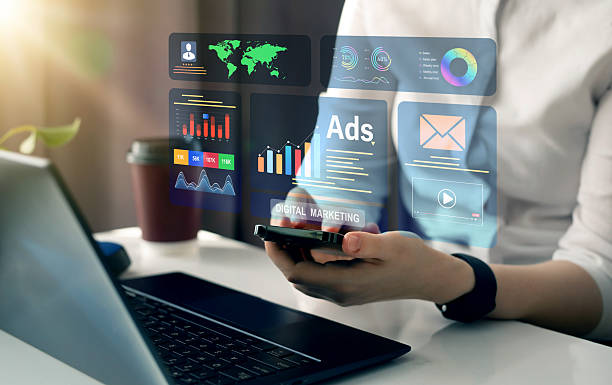
In today’s SEO world, producing high-quality, relevant, and valuable content is more important than ever.
Content is king, and this principle especially applies to on-page SEO.
Search engines, especially Google, are increasingly emphasizing the quality and depth of content.
The goal is to create content that fully answers user queries, provides comprehensive and accurate information, and offers an enjoyable reading experience.
This includes writing text without spelling or grammatical errors, using clear sentences and short paragraphs, and adding visual elements like images and videos for more appeal.
Your content should be thought-provoking content and invite users to think and interact, not just provide superficial information.
It should be such that after reading it, the user does not need to search again for that topic.
Also, optimizing content for on-page SEO does not mean stuffing the text with keywords (which is called Keyword Stuffing), but rather using primary keywords and their synonyms naturally and intelligently.
Google with its advanced algorithms, can detect content quality and user satisfaction.
Therefore, focusing on producing valuable and user-centric content is the best strategy for improving search rankings and enhancing on-page SEO.
Are you dissatisfied with the low conversion rate of visitors to customers on your e-commerce site?
With professional e-commerce website design by Rasaweb, solve this problem forever!
✅ Increase visitor to customer conversion rate
✅ Create excellent user experience and gain customer trust
⚡ Get free consultation now!
Technical Aspects of On-Page SEO That Should Not Be Ignored

In addition to content optimization, several technical aspects also significantly impact your website’s on-page SEO and cannot be ignored.
Site loading speed is one of the most important factors; a site that loads quickly provides a better user experience and has a lower Bounce Rate, which is a positive signal for search engines.
Using tools like Google PageSpeed Insights can help you identify and fix speed-related issues.
Mobile Responsiveness is also highly important, as a significant portion of searches are done via mobile devices, and Google prioritizes mobile-friendly sites (Mobile-First Indexing).
Ensuring your site displays correctly on all devices is vital for on-page SEO.
Also, correct use of Canonical Tags is crucial to prevent problems with duplicate content.
These tags tell search engines which version of a page is the original.
XML Sitemap and Robots.txt file also help crawlers understand your site’s structure and index your pages more effectively.
Finally, implementing SSL (HTTPS) certificate for site security, not only builds user trust but is also recognized as a ranking factor.
Paying attention to these specialized technical details is a necessary complement to your on-page SEO content strategies.
User Experience and Its Impact on Your Site’s On-Page SEO
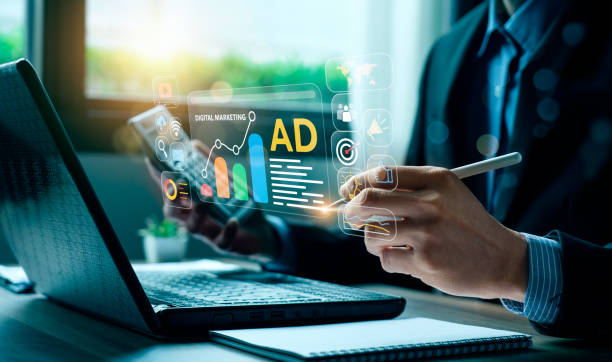
User Experience (UX) and on-page SEO are more intertwined than ever.
Search engines like Google, are looking to provide the best possible experience to their users and therefore, websites with poor user experience, cannot get a good ranking in search results.
Factors such as low Bounce Rate (meaning the user does not immediately leave the page after entering it), high Dwell Time (user spends a lot of time on the page), and the number of pages visited per session, are all important signals for search engines that indicate the quality and relevance of your content.
Google with the introduction of Core Web Vitals, has provided specific metrics for evaluating user experience, which include Largest Contentful Paint (LCP), First Input Delay (FID) and Cumulative Layout Shift (CLS).
Improving these metrics directly impacts your on-page SEO.
A responsive design, easy navigation, readable and organized content, and removal of intrusive elements like sudden pop-ups, all help improve user experience and consequently strengthen on-page SEO.
In fact, the ultimate goal of SEO is for your website to create real value for users and by meeting their needs, search engines will also reward you.
A successful on-page SEO should always put the user at the center of attention.
Internal Linking: A Powerful Strategy for Increasing Page Authority
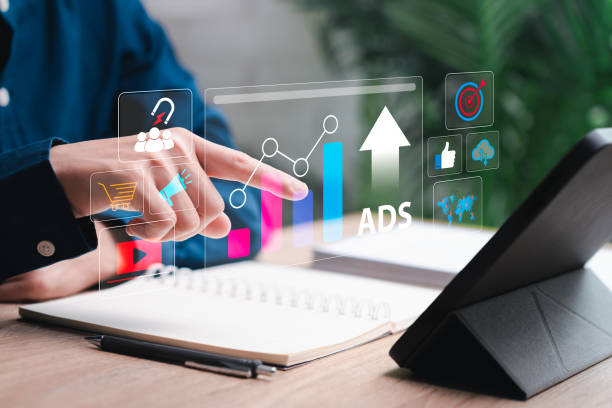
Internal linking or Internal Linking, is one of the most powerful and yet often overlooked aspects of on-page SEO.
This strategy involves creating links from one page on your website to another page on the same website.
Internal links play vital roles: firstly, they help search engines better understand your site’s structure and discover new pages.
Secondly, they distribute value and authority (Link Equity or PageRank) throughout your website and give SEO power to deeper and more important pages.
Thirdly, they improve user experience, as users can easily move between related pages and gain more information.
For an efficient on-page SEO, it is important to use descriptive and relevant Anchor Texts.
Instead of “click here”, use phrases like “Comprehensive Guide to On-Page SEO” which is clear for both the user and the search engine.
Building a strong and logical internal link structure (like a silo structure) can show search engines which pages on your site are more important.
With every internal link that you give from a powerful page to a target page, you actually increase the power and authority of that page.
This is specialized guidance for overall on-page SEO improvement that can have significant results in your page rankings.
| Type of Internal Link | Description and Application | Optimization for On-Page SEO |
|---|---|---|
| Navigation Links | Main links in menus, footer and sidebar that help with site structure. | Create clear hierarchy and improve UX. |
| Contextual Links | Links that are placed within the main content of the article and refer to related articles. | Very effective in transferring PageRank and increasing topical relevance. |
| Breadcrumbs | Navigation path that shows the user’s position on the site (Example: Home > Category > Article). | Helps user and search engine navigation. |
| Related/Suggested Links | Sections such as “Suggested Posts” or “Related Articles” at the end of the page. | Increase dwell time and discovery of new pages. |
Using Schema Markup and Rich Snippets in On-Page SEO

Schema Markup is one of the most advanced and important on-page SEO techniques that helps search engines understand your site’s content more deeply.
Schema is a set of microdata tags that are added to your site’s HTML and provide structured information about the page content to search engines.
For example, you can tell search engines that a part of the text is a recipe, an event, a product review or the contact information of a business.
By using Schema.org, which is a common standard between major search engines, you can create structured data that leads to the display of Rich Snippets in search results.
Rich Snippets are additional and attractive information that are displayed next to the title and meta description in Google results, such as star ratings for products, cooking time for food, or the date and location of an event.
This additional information, not only visually enhances your results, but also significantly increases the click-through rate (CTR), even if your page ranks lower.
Proper implementation of Schema Markup requires specialized knowledge, but its return in improving the visibility and performance of your on-page SEO is very high.
This is a smart investment in optimization that allows search engines to identify the true value of your content and display it to users.
Does your current website convert visitors into customers or drive them away? Solve this problem forever with professional corporate website design by Rasaweb!
✅ Build credibility and powerful branding
✅ Attract target customers and increase sales
⚡ Get free consultation now!
Measuring and Analyzing On-Page SEO Performance
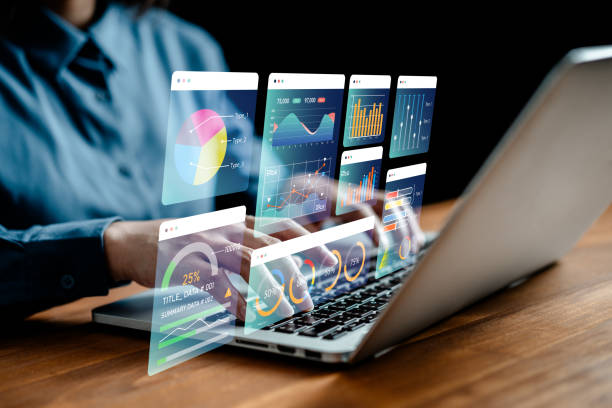
No on-page SEO strategy will be complete without continuous measurement and analysis of its performance.
To ensure that your efforts yield results and you are on the right track, you need to regularly review the data and analyze them.
Tools like Google Analytics and Google Search Console, are two constant companions of SEO professionals.
Google Analytics provides vital information about your site’s traffic, user behavior (such as bounce rate, dwell time, visited pages), traffic sources and conversions.
This data helps you identify the strengths and weaknesses of your on-page SEO.
For example, if the bounce rate of a specific page is high, it may indicate poor content quality or poor user experience.
In contrast, Google Search Console shows you how your site appears in search results.
This tool allows you to see the site’s performance for specific keywords (what rank you have, how many times you have been displayed, and how many clicks you have received), identify technical problems such as crawl errors or indexing problems, and even review your internal and external links.
By regularly monitoring these metrics, you can optimize your on-page SEO strategy, produce new content or improve existing content, and finally, achieve higher rankings and more traffic.
This process is a repetitive cycle of implementation, monitoring and improvement.
The Future of On-Page SEO and the Importance of Continuous Updates
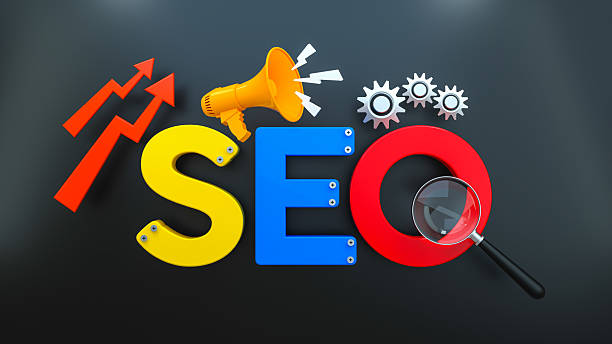
The world of on-page SEO is rapidly evolving and keeping up with the latest changes and Google algorithms is essential for maintaining and improving rankings.
The future of on-page SEO will be heavily influenced by advances in artificial intelligence, voice search and user experience.
Search engines relying on artificial intelligence (such as the BERT and MUM algorithms) are becoming smarter and have the ability to understand user intent and more natural responses to questions.
This means that on-page SEO will focus more than ever on deep, comprehensive and user-centric content.
Voice search is also on the rise and optimizing for it requires focusing on longer and more question-based keywords that are used in daily conversations.
Also, Immersive UX and site speed through Core Web Vitals will gain more importance.
On-page SEO is a continuous and dynamic process.
SEO professionals should constantly learn and update their knowledge, try new tools and monitor Google’s algorithms.
Follow news and specialized articles in the field of SEO and stay abreast of changes.
Your website, for sustainable success, must be flexible and able to adapt to these developments.
Optimizing on-page SEO in the future will not only be a technical task, but also an entertaining art of understanding user needs and providing them with the best content.
Frequently Asked Questions
| No. | Question | Answer |
|---|---|---|
| 1 | What is On-Page SEO? | On-Page SEO refers to a set of actions performed within a website to optimize its pages and achieve a better rank in search results. |
| 2 | What is the most important factor in On-Page SEO? | High-quality, relevant, and comprehensive content that meets user needs is the most important factor in On-Page SEO. |
| 3 | What role does the Title Tag play in On-Page SEO? | The Title Tag is one of the most important factors that tells search engines and users what the page content is about. It should include the main keyword and be engaging. |
| 4 | How important is the Meta Description tag? | Although it does not directly affect ranking, it is very effective on the click-through rate (CTR) in search results and encourages users to visit the page. |
| 5 | How is image optimization performed in On-Page SEO? | By using appropriate alt tags, compressing image size for faster loading, and meaningful image file naming. |
| 6 | What is the importance of using Headings (H1, H2, H3) in On-Page SEO? | Headings help structure content, increase readability, and assist search engines in understanding the hierarchy and sub-topics of the content. |
| 7 | What does Internal Linking mean and what are its benefits? | Internal linking means creating links between different pages of a website. This helps distribute authority, improve user navigation, and assist search engine crawling. |
| 8 | Where should the Focus Keyword be placed on the page? | The main keyword should be placed in the title tag, meta description, H1, the first paragraph, and naturally throughout the text, and if possible, in the URL. |
| 9 | What effect does copied or duplicate content have on On-Page SEO? | Duplicate content can harm site rankings and confuse search engines about which version is original, and they might detect it as spam. |
| 10 | How important is page loading speed in On-Page SEO? | Page loading speed is an important ranking factor and directly affects user experience. Slow pages lead to an increase in user bounce rates. |
And other services of Rasaweb Advertising Agency in the field of advertising
Smart Link Building: A new service for increasing customer behavior analysis through precise audience targeting.
Smart UI/UX: A combination of creativity and technology for analyzing customer behavior through precise audience targeting.
Smart Content Strategy: An effective tool for campaign management with the help of an SEO-driven content strategy.
Smart Marketing Automation: A new service for increasing digital branding through an SEO-driven content strategy.
Smart Brand Identity: An effective tool for increasing click-through rate with the help of attractive user interface design.
And over hundreds of other services in the field of internet advertising, advertising consultation, and organizational solutions
Internet Advertising | Advertising Strategy | Advertorial
Resources
What is SEO on Rastinweb
On-Page SEO on Seokaran
What is SEO on Mizbanfa
Comprehensive SEO Guide on Ghafaseo
? With Rasaweb Afarin, your business gains new life in the digital world. We, with expertise in secure website design, search engine optimization (SEO) and online advertising campaign management, are with you on the path to success.
📍 Tehran, Mirdamad Street, next to Bank Markazi, Southern Kazeroon Alley, Ramin Alley, No. 6

